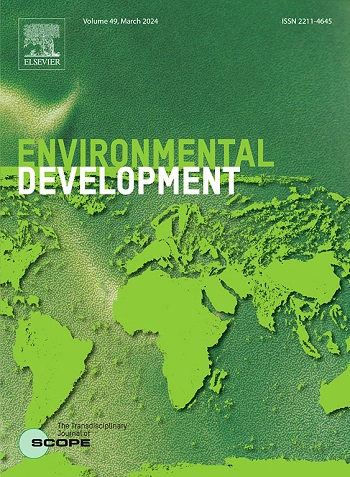Changes in land use and cover and carbon stock estimates in the Red River Sub-basin, state of Mato Grosso, Brazil
IF 5.3
2区 环境科学与生态学
Q2 ENVIRONMENTAL SCIENCES
引用次数: 0
Abstract
The “Rio Vermelho” Sub-basin (SBHRV), located between the Cerrado and Pantanal biomes, faces intense deforestation and agribusiness expansion, factors that increase greenhouse gas emissions in Brazil. This study assessed changes in land use and cover, the dynamics of carbon stocks and economic valuation for the years 2000, 2008 and 2020, using the InVEST model. The results indicate that between 2000 and 2020, forest and savannah areas decreased from 40.7 % to 37 % of the SBHRV, while pastures increased from 34.2 % to 36.8 % and soybean cultivation from 9.3 % to 13.4 %. Accumulated deforestation amounted to 110,413 ha (7.4 % of the total area), and forest regeneration accounted for only 4 % in the period. The net carbon stock was reduced by around 3.6 million Mg, falling from 104.3 million Mg in 2000 to 100.7 million Mg in 2020. The associated economic loss was estimated at US$ 600 million due to the social cost of carbon, US$ 296.8 million on the international market and US$ 73.6 million on the Brazilian CBIO market. The results reinforce the transformation of the landscape and the need for integrated strategies to conserve carbon stocks and ecosystem services in the SBHRV.
巴西马托格罗索州红河次流域土地利用和覆盖变化及碳储量估算
位于塞拉多和潘塔纳尔生物群落之间的“里约热内卢Vermelho”子盆地(SBHRV)面临着严重的森林砍伐和农业综合企业扩张,这些因素增加了巴西的温室气体排放。本研究利用InVEST模型对2000年、2008年和2020年的土地利用和覆盖变化、碳储量动态和经济价值进行了评估。结果表明:2000 - 2020年,森林和草原面积从40.7%减少到37%,牧场面积从34.2%增加到36.8%,大豆种植面积从9.3%增加到13.4%。累计毁林面积达110,413公顷(占总面积的7.4%),在此期间森林更新仅占4%。净碳储量减少了约360万毫克,从2000年的1.043亿毫克下降到2020年的1.07亿毫克。由于碳的社会成本,相关的经济损失估计为6亿美元,在国际市场上为2.968亿美元,在巴西CBIO市场上为7360万美元。研究结果强调了景观的转变以及在SBHRV中保护碳储量和生态系统服务的综合战略的必要性。
本文章由计算机程序翻译,如有差异,请以英文原文为准。
求助全文
约1分钟内获得全文
求助全文
来源期刊

Environmental Development
Social Sciences-Geography, Planning and Development
CiteScore
8.40
自引率
1.90%
发文量
62
审稿时长
74 days
期刊介绍:
Environmental Development provides a future oriented, pro-active, authoritative source of information and learning for researchers, postgraduate students, policymakers, and managers, and bridges the gap between fundamental research and the application in management and policy practices. It stimulates the exchange and coupling of traditional scientific knowledge on the environment, with the experiential knowledge among decision makers and other stakeholders and also connects natural sciences and social and behavioral sciences. Environmental Development includes and promotes scientific work from the non-western world, and also strengthens the collaboration between the developed and developing world. Further it links environmental research to broader issues of economic and social-cultural developments, and is intended to shorten the delays between research and publication, while ensuring thorough peer review. Environmental Development also creates a forum for transnational communication, discussion and global action.
Environmental Development is open to a broad range of disciplines and authors. The journal welcomes, in particular, contributions from a younger generation of researchers, and papers expanding the frontiers of environmental sciences, pointing at new directions and innovative answers.
All submissions to Environmental Development are reviewed using the general criteria of quality, originality, precision, importance of topic and insights, clarity of exposition, which are in keeping with the journal''s aims and scope.
 求助内容:
求助内容: 应助结果提醒方式:
应助结果提醒方式:


